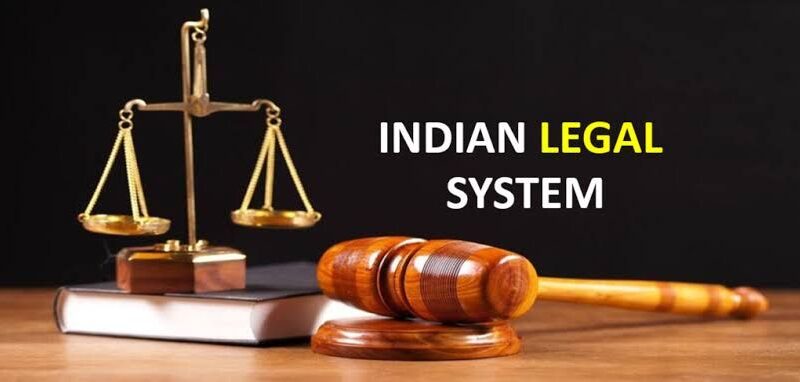Navigating the Labyrinth: A Deep Dive into the Indian Legal System

Author- Madhusudan Prasad, A Student of National Forensic Sciences University.
The Indian legal system is a fascinating labyrinth, a complex tapestry woven from ancient traditions, colonial legacies, and modern aspirations. To decipher its intricacies, we must embark on a journey through its history, philosophy, and contemporary realities. This article delves deeper into the framework, sources, challenges, and aspirations of Indian law, offering a comprehensive look at its present state and future trajectory.
Foundations of Duality:
At the core of the Indian legal system lies a fundamental duality. It inherits the common law tradition from British rule, evident in its reliance on judicial precedents, adversarial trials, and codified statutes. Yet, beneath this layer lies a vibrant tapestry of customary law and religious law, governing personal matters like marriage, inheritance, and social norms for specific communities. This confluence of legal sources sparks constant dialogue and interpretation, necessitating ongoing adjustments to navigate conflicts and ensure equity.
The Constitution: Blueprint for Justice:
The Indian Constitution, the world’s longest written one, stands as the unyielding bedrock of the legal system. It outlines fundamental rights like equality, dignity, and freedom of speech, acting as a compass for legislation and adjudication. Its emphasis on social justice, secularism, and the separation of powers forms the core of modern Indian law and serves as a constant reminder of the nation’s aspirations.
Guardians of Justice: The Judicial Hierarchy:
The Indian judiciary, led by the majestic Supreme Court, operates through a three-tiered structure. At the apex stands the Supreme Court, with 34 judges wielding enormous power in both original and appellate cases. High Courts in each state act as the next level, interpreting the Constitution and overseeing subordinate courts within their jurisdiction. A vast network of district, taluka, and village courts provides access to justice at the grassroots level, though issues of pendency and efficiency linger.
Sources of Law: Where Justice Springs From:
Indian law draws its vitality from multiple sources, each playing a distinct role. Statutes enacted by Parliament and state legislatures form the primary written law, covering a wide range of issues from criminal justice to environmental protection. Case law established by judicial precedents, particularly pronouncements by the Supreme Court and High Courts, hold significant weight, shaping legal interpretations and guiding future judgments. Customary law and religious law continue to govern specific spheres, particularly personal matters within various communities. However, their applicability and interpretation remain contested, demanding constant reevaluation and nuanced understanding.
Challenges and Chinks in the Armor:
Despite its robust framework, the Indian legal system faces a multitude of challenges. A staggering backlog of cases, estimated at over 44 million in 2023, impedes timely access to justice and strains the system’s resources. Judicial vacancies, a persistent issue, further exacerbate delays and hinder efficient case disposal. Unequal access to legal aid, particularly for marginalized communities, creates a formidable barrier to justice for countless individuals. Corruption, though tackled through initiatives like e-courts and digitization, continues to cast a shadow, eroding public trust and demanding sustained vigilance.
Modernization and Reform: Weaving a Brighter Future:
Recognizing these challenges, India has embarked on a path of legal reform, aiming to strengthen its judicial armor. The introduction of alternative dispute resolution mechanisms like arbitration and mediation seeks to reduce the burden on courts and offer swifter avenues for conflict resolution. E-courts and digitization initiatives, while facing concerns about accessibility and digital literacy, strive to enhance transparency, efficiency, and paperless record-keeping. Judicial reforms focused on filling vacancies, streamlining procedures, and improving infrastructure also hold promise for a more robust and responsive system.
Spotlight on Specific Concerns:
The Indian legal system faces unique challenges within specific areas. Access to justice for marginalized communities like women, religious minorities, and Dalits remains a critical concern. Gender-based violence, despite stringent laws like the Protection of Children from Sexual Offences Act (POCSO), continues to plague society, demanding comprehensive reforms in law enforcement, investigation, and judicial sensitivity. Environmental disputes arising from rapid development demand specialized legal frameworks and efficient adjudication mechanisms. These challenges necessitate targeted strategies and sustained efforts to ensure that the tapestry of justice truly embraces all.
Beyond the Horizon: Embracing Global Trends:
As globalization and technological advancements reshape the world, the Indian legal system must adapt. Emerging legal frameworks in areas like data privacy, cybercrime, and intellectual property demand continuous engagement with international law and best practices. The rise of transnational litigation necessitates collaboration with foreign legal systems to ensure effective dispute resolution. India’s active participation in international legal forums and its growing influence on the global stage offer opportunities to contribute to the evolution of international law and shape a more just and equitable world order.
The Road Ahead: Weaving a More Perfect Tapestry of Justice
The Indian legal system, like a vibrant tapestry, is constantly evolving. Navigating its intricate threads towards a future of fairer, more accessible justice requires unwavering commitment to reform and a vision for a more perfect union. This journey demands action on multiple fronts:
1. Strengthening the Pillars of Justice:
- Addressing Judicial Vacancies: Filling vacant positions expeditiously through transparent and meritocratic processes is crucial. Increasing the number of judges, particularly in lower courts, will expedite case disposal and reduce pendency.
- Enhancing Judicial Infrastructure: Modernizing courtrooms, investing in efficient case management systems, and improving legal research facilities are essential for a more conducive environment for judges and advocates.
- Promoting Judicial Accountability: Robust mechanisms for evaluating judicial performance, addressing complaints swiftly, and ensuring transparent disciplinary processes are crucial for upholding the integrity of the judiciary.
2. Widening the Threads of Inclusivity:
- Empowering Legal Aid: Ensuring access to quality legal aid for underprivileged communities through increased funding, training, and awareness campaigns is crucial for bridging the justice gap.
- Sensitizing Judicial System: Training judges and court staff on issues like gender sensitivity, cultural sensitivity, and disability rights will go a long way in ensuring fairer outcomes for marginalized groups.
- Simplifying Legal Procedures: Streamlining court procedures, simplifying legal language, and providing legal information in vernacular languages will enhance accessibility and participation of all citizens in the legal system.
3. Embracing Technological Tapestry:
- Digital Transformation: Expanding e-courts, promoting online filing of cases, and implementing electronic record-keeping will not only increase efficiency but also enhance transparency and reduce corruption.
- Leveraging Artificial Intelligence: Exploring the potential of AI for tasks like legal research, document analysis, and case prediction can further streamline processes and reduce judicial workloads.
- Bridging the Digital Divide: Providing digital literacy training and ensuring affordable internet access, particularly in rural areas, are crucial for bridging the digital divide and ensuring equitable access to the digitalized legal system.
4. Engaging with the Global Fabric:
- Strengthening International Cooperation: Collaborating with foreign legal systems on issues like extradition, mutual legal assistance, and cross-border crime prevention will ensure effective law enforcement and justice delivery.
- Active Participation in International Legal Forums: Contributing to the development of international law, taking leadership roles in global legal initiatives, and promoting human rights will enhance India’s global standing and contribute to a more just world order.
- Embracing Comparative Law: Studying legal systems of other nations and adapting effective practices can enrich the Indian legal framework and provide solutions to contemporary challenges.
Weaving a more perfect tapestry of justice in India is a continuous process, a collective endeavor demanding collaboration from the judiciary, legislature, law enforcement agencies, civil society, and every citizen. By addressing the challenges, upholding the values enshrined in the Constitution, and embracing emerging trends, India can navigate the labyrinth of its legal system towards a future where justice is accessible, equitable, and truly serves the needs of all.



You can create interest in any topic! Bravo!